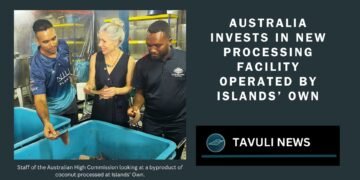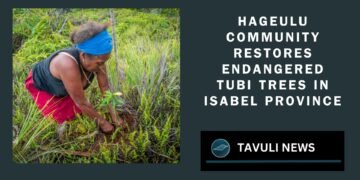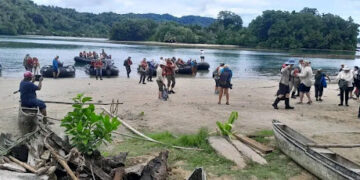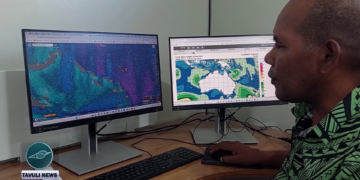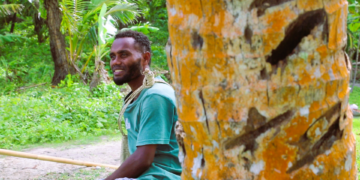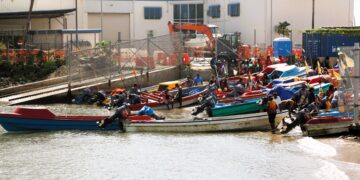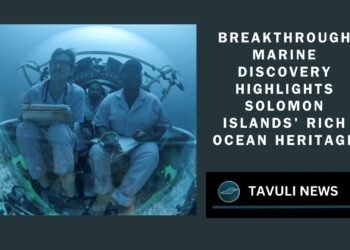A team of researchers has uncovered the world’s largest coral in the southwest Pacific Ocean.
A team of scientists aboard a research vessel in the southwest Pacific Ocean has made an extraordinary discovery: the world’s largest coral. Measuring an astounding 34 meters in width, 32 meters in length, and 5.5 meters in height, this giant coral has a circumference of 183 meters. Unlike traditional coral reefs, which are made up of multiple coral colonies, this is a single, uninterrupted coral structure that has grown for over 300 years.
The remarkable coral, species Pavona clavus, was discovered in the Three Sisters island group by the National Geographic Pristine Seas team during an expedition to the Solomon Islands. The massive coral is mostly brown, with vibrant splashes of yellow, blue, and red. Its surface ripples with the motion of the ocean, creating a stunning visual effect.
This coral is so large that it is visible from space, and when first spotted by the team, they initially believed it could be a shipwreck. Upon closer inspection, however, it was confirmed as a single, gigantic coral. Local communities were unaware of its existence until the discovery.
“This is a significant scientific breakthrough, akin to finding the world’s tallest tree,” said Enric Sala, National Geographic Explorer in Residence and founder of Pristine Seas. “But there is cause for concern. Even in such a remote location, this coral is not immune to global warming and human threats.”
Despite its immense size, this coral provides vital habitat for a variety of marine species, from shrimp and crabs to fish. “This discovery highlights the importance of protecting coral reefs, which are essential for both biodiversity and the livelihoods of local communities,” said Prime Minister Jeremiah Manele.
The coral’s polyps, which have grown over centuries, are genetically identical and have multiplied over time to form the enormous structure. Scientists believe that large coral colonies like this play a crucial role in the recovery of coral reef ecosystems due to their high reproductive potential.
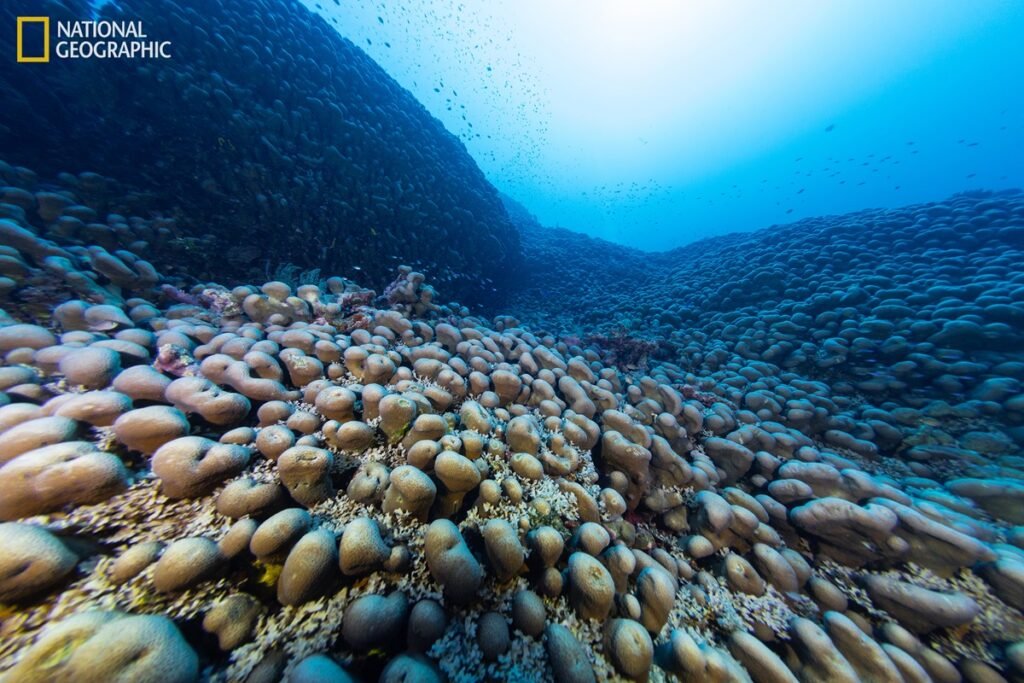
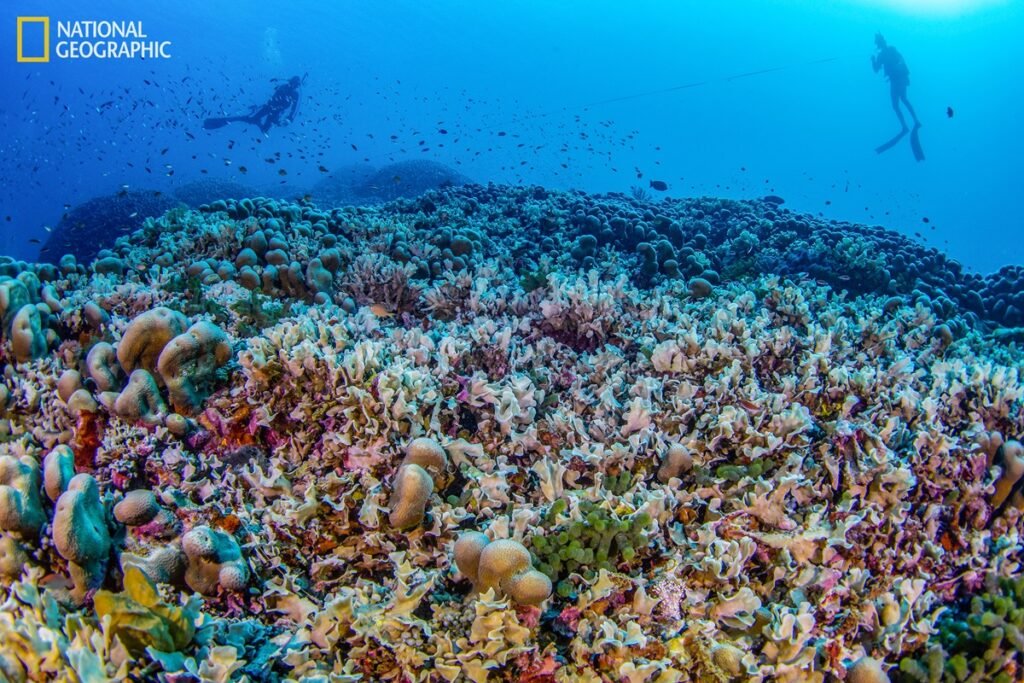
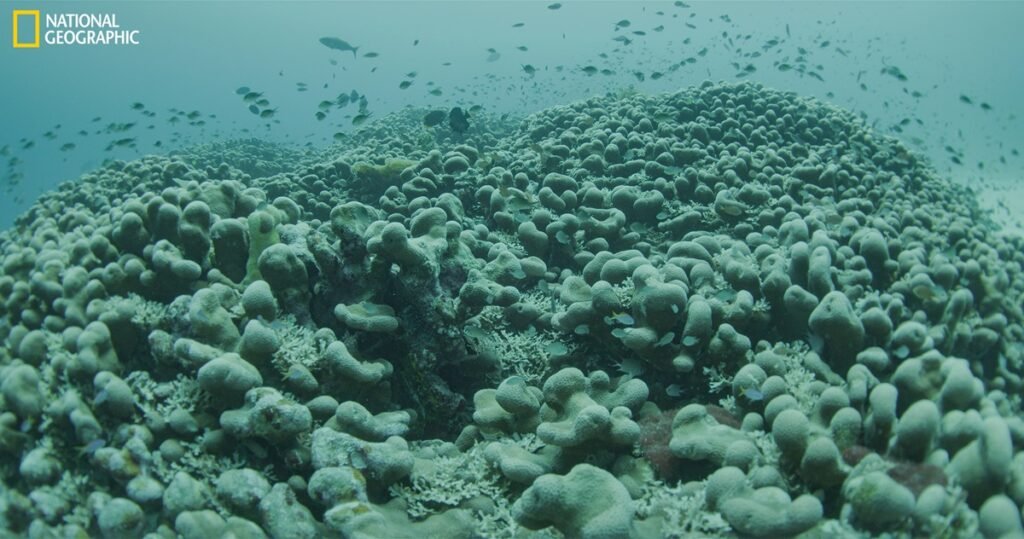
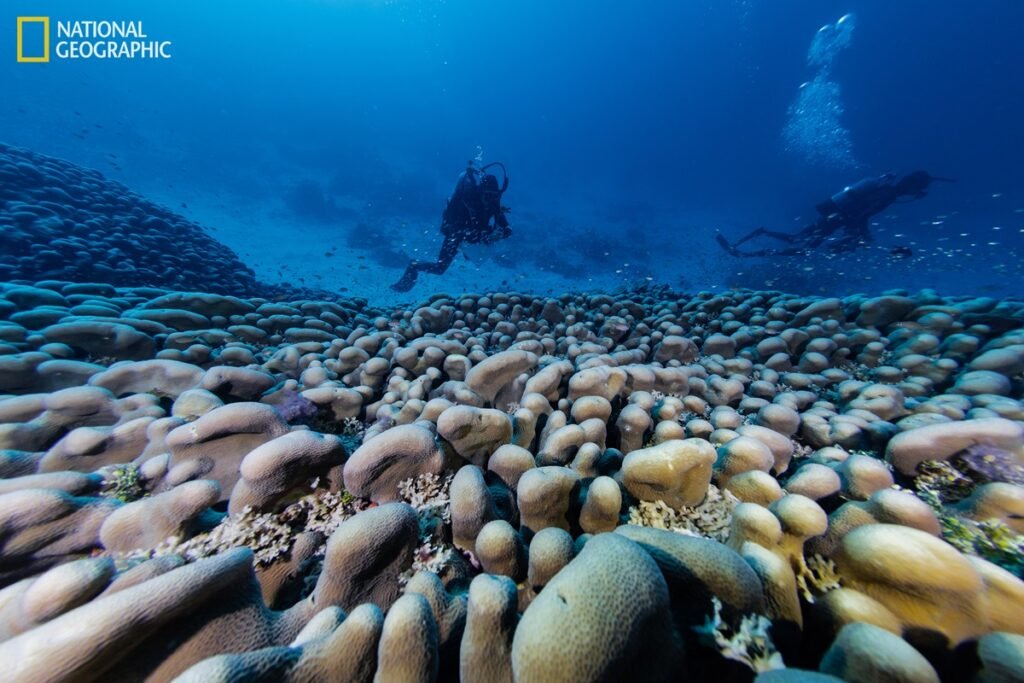
“The discovery of this coral is a beacon of hope,” said Eric Brown, coral scientist for the Pristine Seas expedition. “While nearby reefs have suffered from warming seas, this massive coral remains healthy, offering hope for the future of coral ecosystems.”
This groundbreaking find comes at a time when only 8.4% of the world’s oceans are protected. Scientists urge global efforts to protect at least 30% of the ocean to help mitigate climate change and ensure the survival of marine life.
Collin Beck, Permanent Secretary of the Solomon Islands Ministry of Foreign Affairs and External Trade, emphasized the importance of preserving such discoveries. “The Solomon Islands is the guardian of the Coral Triangle’s wonders, and this discovery underlines the need for continued research and conservation efforts.”
The Solomon Islands, which hosts the second highest coral diversity in the world, is home to more than 490 known coral species. This new discovery only deepens the significance of the country’s role in global marine conservation efforts.
In mid-October, National Geographic Pristine Seas launched an extensive research expedition in partnership with the Solomon Islands government and several scientific organizations to study the health of the country’s oceans. The team is using cutting-edge technology, including underwater cameras and submersibles, to better understand the marine ecosystem and support efforts to conserve ocean biodiversity.
Facts About the Discovery:
- The mega coral is about the size of two basketball courts or five tennis courts.
- The coral’s estimated age is between 300 and 500 years, based on its size and comparisons with similar species in the Pacific.
- The discovery was made by a team of 18 scientists and filmmakers aboard the Argo research vessel.
Source:- National Geographic Pristine Seas Pristine Seas works with Indigenous and local communities, governments, and other partners to help protect vital places in the ocean using a unique combination of research, community engagement, policy work, and strategic communications and media. Since 2008, our program has conducted more than 45 expeditions around the world and helped establish 29 marine reserves, spanning more than 6.8 million square kilometers of ocean. Pristine Seas is part of the global non-profit, the National Geographic Society. Our mission is driven by science and filmmaking — we are fully independent from National Geographic publishing and its media arm.
















